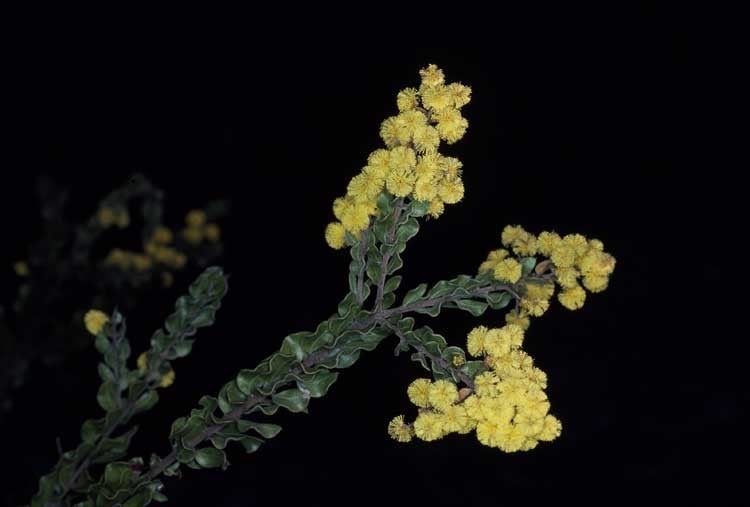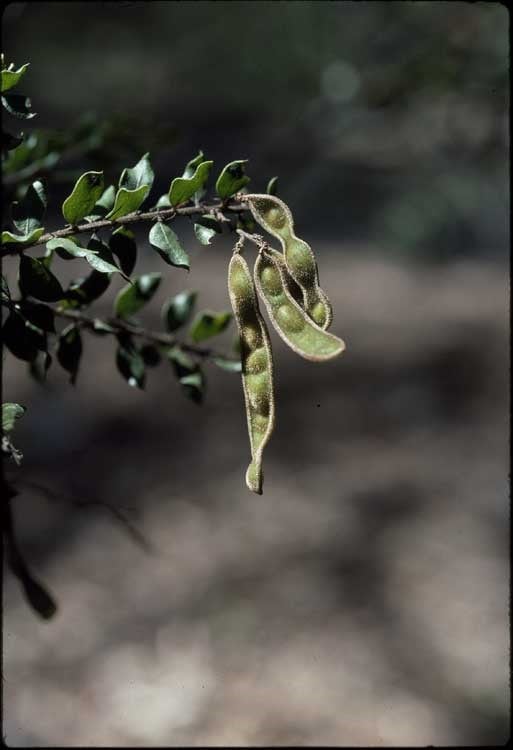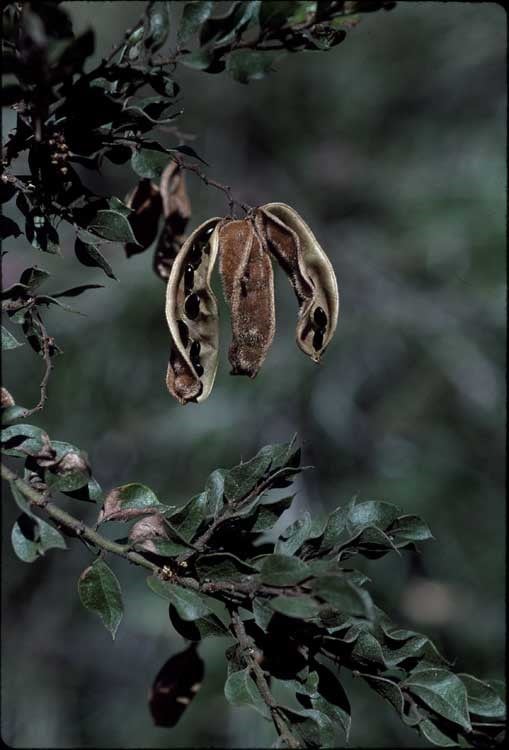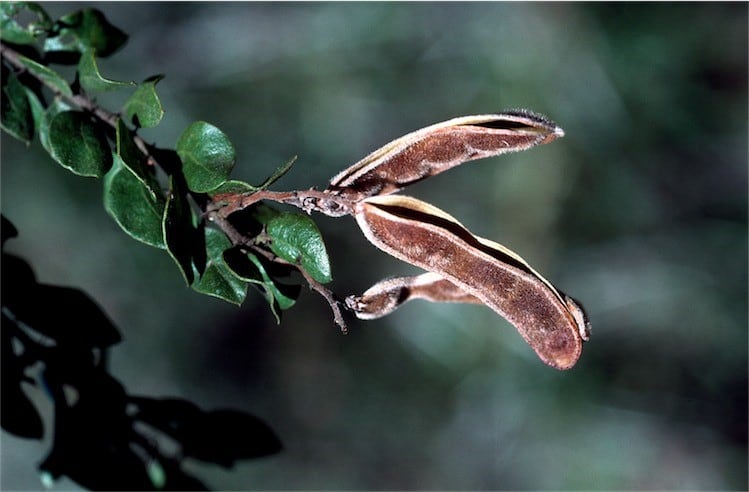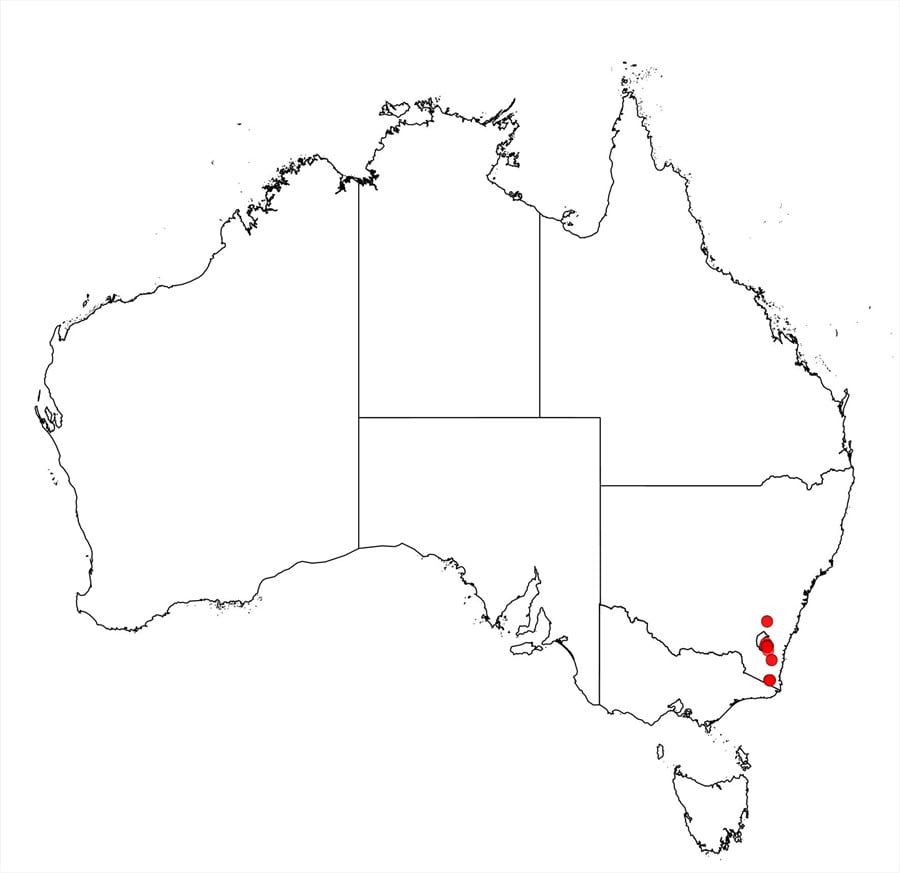Acacia costiniana Tindale
WATTLE
Acacias of Australia
Family
Fabaceae
Distribution
Restricted to the Tinderry Mtns, south-eastern N.S.W.
Description
Weeping, multistemmed shrub 0.6–2.5 m high. Branchlets puberulous. Stipules 1–3 mm long. Phyllodes crowded, mostly ascending to erect, asymmetrically ovate to elliptic, 0.5–2 cm long, (3–) 5–11 mm wide, with unequal base, mostly ±undulate, acute- to obtuse-mucronate, coriaceous, with indumentum of fine ±sparse straight appressed hairs; midrib slightly excentric; lateral nerves obscure; gland not prominent, 0–1 mm above pulvinus. Inflorescences simple or racemose; raceme axes 0.5–3 cm long; peduncles 1.5–10 mm long, puberulous; heads obloid to subglobular, to 6 mm long, 14–26-flowered, golden or rich lemon yellow. Flowers normally 5-merous; sepals 1/2-2/3-united. Pods narrowly oblong, to 5 cm long, (7–) 10–12 mm wide, thinly coriaceous, velvety with ferruginous to silvery-ferruginous hairs. Seeds transverse to oblique, ovate to oblong-elliptic, 4–6 mm long, somewhat shiny, black; aril clavate.
Habitat
Grows on usually granitic slopes or in sheltered gullies, sometimes in heath on edges of swamps, in Eucalyptus forest or woodland, at about 1200 m alt.
Specimens
N.S.W.: Tinderry Mtns, 9 km ESE of Michelago, L.G.Adams 2402 (NSW); Tinderry Mtns, 13.2 km by road ESE of Michelago, R.Coveny 6582 et al. (NSW, PERTH).
Notes
Allied to the more southerly distributed A. lucasii which has non-pendulous branchlets and normally larger, tomentulose phyllodes: see protologue of A. costiniana for further details. These two species share with A. dorothea the unusual combination of characters of 1-nerved phyllodes and obloid flower-heads.
FOA Reference
Data derived from Flora of Australia Volumes 11A (2001), 11B (2001) and 12 (1998), products of ABRS, ©Commonwealth of Australia
Author
Minor edits by B.R.Maslin & J.Rogers
B.R.Maslin
This identification key and fact sheets are available as a mobile application:
URL: https://apps.lucidcentral.org/wattle/
© Copyright 2018. All rights reserved.

